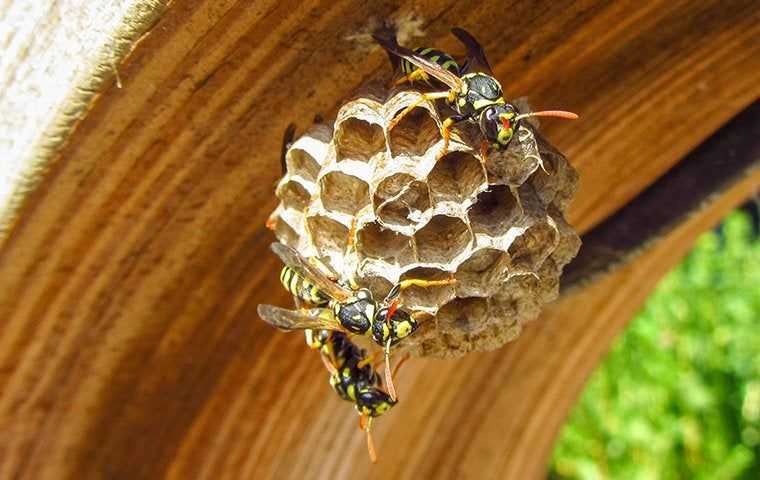Stinging Insects In Huntsville, AL
What Are Stinging Insects?
There are many different types of stinging insects, varying in appearance, behavior, habitat, and aggressiveness. Common species in our area are:
- Honeybees
- Yellow jackets
- Wasps
- Carpenter bees
- Bumblebees
As always, taking measures to prevent pests from entering your home is essential to protect yourself and your family from painful stings.

Our FAQ
Have questions? We are here to help. Still have questions or can't find the answer you need? Give us a call at 256-907-1506 today!
-
How can I prevent stinging insects in the future?
To ensure continuous protection from stinging insects for you and your family, reduce flowing plants, secure garbage in bins with tight-fitting lids, eliminate water sources, fill ground holes, and inspect your home for any potential entry points.
You should also check for new nests, and if you see one starting to form, don't forget to call us at Morton's Pest Control for assistance!
-
How do I get rid of stinging insects?
Handling stinging insects on your own doesn't only put you in danger, but also any people or animals nearby. For safety's sake, you should leave stinging insect removal to professionals, even if you think a nest is empty.
Contact us at Morton's Pest Control for safe and effective stinging insect removal and control. As a local, family-owned business, we prioritize the safety of you, your family, and your pets. Our high-quality home pest solutions and commercial pest management programs only use EPA-approved products. Reach out today to learn more and get started with one of our expert technicians.
-
Where will I find stinging insects?
Depending on the species, you can find stringing insects in several different places on your property. Social species live in large colonies, and some prefer to build their hives underground or under debris. Others will make hives in exposed spaces like on tree branches and overhangs. Common places you can find stinging insect nests on your property are under decks, porches, eaves, play structures, outbuildings, and hollow trees, stumps, and logs.
Other stinging insects like carpenter bees are solitary and live alone. Carpenter bees specifically build their nests in wood, chewing circular holes. Places they can be found include decks, doors, wooden furniture, fences, doors, and railings.
-
Why do I have a stinging insect problem?
The stinging insects listed above, especially honeybees, are essential pollinators, plus wasps feed on insects usually found around plants and flowers. So if you have flowering plants, including vegetable plants and fruit trees, this may be the cause of your stinging insect problem.
Carpenter bees are attracted to unfinished, weathered, and rotting wood. They, as well as other species, also look for water sources, including pools, ponds, and small amounts of collected water.
-
Are stinging insects dangerous?
A simple answer to this question is yes, stinging insects are dangerous. However, this simple answer doesn't tell the whole story. Honeybees and bumblebees are not aggressive species; however, they will attack if they feel threatened. On the other hand, wasps and yellow jackets are considered more aggressive.
All species we have mentioned have smooth stingers except for honeybees, which have barbed stingers. Smooth stingers allow the insect to sting more than once, whereas barbed ones can only sting once. Because of this, species that can sting more than once are inherently more dangerous the honeybees.
One of the main concerns with any kind of stinging insect is that people and animals can be allergic to their venom. It is always best to avoid these insects, monitor symptoms, and seek medical attention if necessary, as an allergic reaction can result in anaphylaxis.

Hear From Our Happy Customers
At Morton's Pest Control, Inc, your satisfaction is our priority! See for yourself what our customers have to say about working with us.
-
“I am extremely happy with my service and so glad I made the choice to switch to them.”- Megan M.
-
“Morton's Pest Control Is very professional in its servicing of our residence.”- Valued Customer
-
“These are people you can trust and feel comfortable around.”- Emma H.
-
“Great customer service and builds great relationships with his clients.”- Genna H.
-
“Wonderful customer relations and the service/results are amazing.”- Ashley D.
-
“If I had one word for this company, it is family.”- Johnny J.
-
“Always making sure we are okay and goes above and beyond.”- Strorage Sense Hartselle
-
“Anthony's professional customer service is one reason we signed up for Morton's quarterly pest service after closing on our house.”- Kirsten